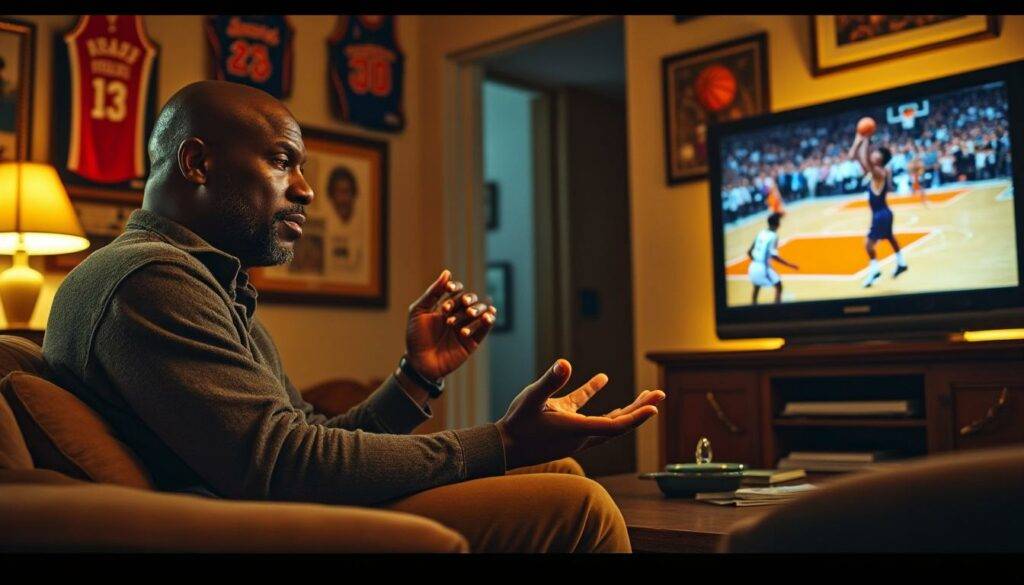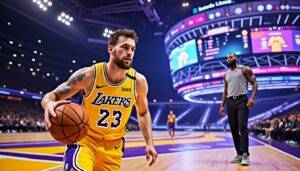Cuttino Mobley criticizes the modern NBA style of play: 'Anthony Edwards takes four additional threes per game and scores two extra points

The modern NBA has embraced a three-point shooting explosion, with players like Anthony Edwards taking this trend to new extremes. However, not everyone in the basketball community is thrilled with this shift. Former NBA sharpshooter Cuttino Mobley has voiced sharp criticism of today’s style, questioning the logic behind relying so heavily on perimeter shots and whether it truly benefits star players’ efficiency and team scoring. In an era dominated by brands like Nike, Adidas, and Jordan Brand fueling the game’s image, Mobley’s candid insights reflect both nostalgia and frustration with the current pace and strategy of professional basketball.
Cuttino Mobley Calls Out NBA’s Three-Point Obsession And Anthony Edwards’ Volume Shooting
There’s no denying that the NBA’s three-point attempts have skyrocketed, fundamentally reshaping offensive strategies. Teams bleed threes per game—around 37.6 attempts on average—but Mobley isn’t convinced this volume translates to better outcomes. He pointedly highlighted Minnesota Timberwolves star Anthony Edwards who, in the last season, took four more three-point shots per game than the previous year, yet managed only a two-point increase in scoring average. This raises questions about efficiency and shot selection in a league where scoring should theoretically rise alongside shot volume.
Mobley’s critique goes deeper: “If you’re out there, hopping from three-point spot to three-point spot, and teams shoot almost 40% from beyond the arc, you’d expect offensive production to jump. But that’s just not happening.” His observation isn’t mere nostalgia—it emphasizes a disconnect between current three-point attempts and actual scoring growth despite the advanced training and conditioning players enjoy thanks to brands like Under Armour, Puma, and the tech-infused Kobe Systems.
NBA Teams’ Relentless Volume Shooting: Growth Without Expected Rewards?
- NBA teams shoot around 37.6 threes per game; Boston Celtics lead with 47.2 attempts.
- Three-point shooting percentage hovers near 36%, yet points per game dipped slightly to 113.8.
- Anthony Edwards’ 10.3 three-point attempts per game show volume doesn’t guarantee scoring spike.
- Mid-range and inside-the-paint play remains underutilized despite its proven efficiency.
With all the hoopla around three-pointers, it’s intriguing that teams haven't translated their volume into higher scoring averages. This paradox shines a spotlight on the preference for flashy yet often less efficient perimeter shots over the classical pounding paint game.
Old-School Strategy Versus Modern NBA: Mobley’s Vision Of Dominating Style
Despite the influx of high-tech recovery gear from Reebok and training advances from Li-Ning and Asics in 2025, Mobley argues that old-school basketball—focused on inside scoring, posting up, and physical play—would absolutely disrupt today’s perimeter-heavy game. He boldly claims if he and a few early-2000s teammates played under Byron Scott’s coaching against current NBA squads, “We would smash them.”
His reasoning? Contemporary teams rely heavily on three-point shooting but neglect grinding it out down low: “We’d wear them down, attack the paint every chance we get, and break their rhythm. Shooting 60 threes a night with tired legs? They won’t keep up.”
- Emphasis on post-ups and mid-range shooting can slow games and exhaust defenders.
- Older era players called on physicality and patience rather than perpetual perimeter shooting.
- Analytical obsession with threes overlooks the value of forcing defensive half-court sets.
This assertion challenges the trend codified by teams anchored by Nike and Jordan Brand athletes who build offenses around spacing and three-point firepower. Mobley suggests there’s still merit in a strategically slower, more physical approach to dismantle the modern NBA’s run-and-gun formula.
Modern Player vs. Old-School Mindset: Who Has the Edge?
Mobley recognizes that today’s players are stronger and faster, benefiting from cutting-edge training techniques and gear from Puma, New Balance, and Under Armour. Yet he remains confident his era’s style could exploit modern teams’ weaknesses.
- Modern NBA: reliance on spacing, speed, and three-point shooting with advanced shoes and tech.
- Old-school basketball: physicality, post moves, high basketball IQ, and energy management.
- Players like Anthony Edwards, influenced by Steph Curry, have increased threes but seen limited scoring jumps.
- Potential for a hybrid style mixing efficiency of inside scoring with modern perimeter threats.
As we witness the ongoing evolution of the game, the debate between traditionalism and innovation intensifies. Mobley’s critique is a reminder that basketball is as much about strategy and rhythm as about sheer volume of attempts.
For hardcore NBA followers and sneakerheads tracking transitions from Reebok to Nike, Adidas, and Li-Ning sponsorships, understanding these stylistic shifts is crucial. For those interested in the upcoming NBA playoffs bracket, or curious about how prospects fit into this new landscape like in the NBA mock draft, Mobley's perspective adds an invaluable layer of context.
Whether you side with Mobley’s nostalgia or embrace the three-point revolution, one thing’s clear: the NBA’s identity battle is far from over.

